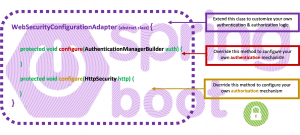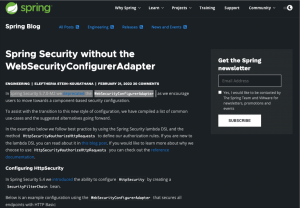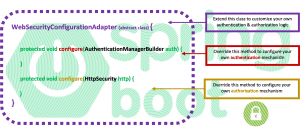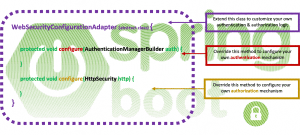Installing the Apache Portable Runtime APR-based Native library for Tomcat
Installing the Tomcat APR native library allows us to work smoothly with both: the JSSE and the OpenSSL implementation.

Installing the Tomcat APR native library allows us to work smoothly with both: the JSSE and the OpenSSL implementation.
APR mainly is a supporting library for the Apache web server, offering also some more encasements and functionalities. In this post, you can see the process of installing it in a Debian/Linux distribution system.

This is the 2nd part (the 2nd case example) of how to implement a custom validation in Spring Boot. In this Post we proceed with the implementation of a “master-details” custom validation example, as we’ve mentioned at the beginning.

In this post, we focus on a common case, when we have to check if a value in a JSON field, passed in the body of a POST request, is one of the values provided in an array we define.

This is the 3rd in a series of posts which focuses on LDAP Authentication, but does not provide any detail on the LDAP itself. Our aim is to demonstrate how you can implement LDAP Authentication with Spring Boot framework, by using either a configurer (via the the ldapAuthentication()) or an authentication provider Bean (the LdapAuthenticationProvider) in a classic Custom Security Configuration class, extending
the WebSecurityConfigurerAdapter

Using a Custom Security Configuration class based on WebSecurityConfigurerAdapter should not be a case for you anymore. This is because it has been deprecated since Spring Security 5.7.0-M2.
However, if you wish to continue using it for a while, without seeing the warning curly yellow lines in your IDE, then here is a quick solution.

This is a very very simple, yet well-working, Spring Boot REST API project, demonstrating the fundamental building blocks of such a project. The idea is to motivate beginner learners to start digging deeper after they can see how easily they can implement and see running a Spring Boot Rest API service.

manager. Here, I present shortly, how you can install it via Docker.

This is the 2nd in a series of posts about the Spring Security customization based on the implementation of a custom class extending the WebSecurityConfigurerAdapter abstract class.

The legacy Spring Boot Security Configuration, extending the WebSecurityConfigurerAdapter abstract class, is considered deprecated and is being replaced by a component-based security configuration. However, since the existing coding base is huge, here, we will stick to customization of the WebSecurityConfigurerAdapter, and we will try to provide a better understanding, using practical examples.